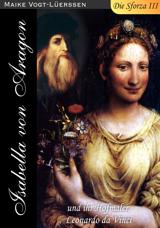Die Situation für das Königspaar in England war im Jahr 1641 bereits sehr kritisch. Besonders Henriette Maria war von den puritanischen Politikern im Parlament unter schwerem Beschuss. Sie wurde als Erzfeind Nummer 1 betrachtet, die im englisch-schottischen Königreich den Katholizismus wieder einführen wollte und die das Parlament und die Freiheit des englischen und des schottischen Volkes aufzuheben trachtete. An ihre Schwester Christine, der Herzogin von Savoyen, schrieb sie Folgendes: "I swear to you, I am almost mad at the sudden change in my fortune ... Imagine my condition at seeing the king deprived of power, the Catholics persecuted, the priests scattered, our loyal servants removed from us and pursued for their life for having endeavored to serve the king, and me kept here like a prisoner, forbidden even to follow the king who is leaving for Scotland, and with no one in the world to whom I can tell my afflictions, and knowing withal that I must not show any resentment at it. ... The king leaves the day after tomorrow if the Parliament does not restrain him by force; they threaten to. God help us: we need of it." (in: Katie Whitaker: A Royal Passion - The turbulent marriage of King Charles I of England and Henrietta Maria of France, id., p. 215).
"Henrietta was fast becoming the villain she would remain in Protestant English history: 'a papist, a French lady of haughty spirit,' who ... had applied 'her great wit and parts' to stir the king's 'violent purpose' against his subjects, producing 'sad desolations.' Charles 'was enslaved in his affection only to her, though she had no more passion for him than what served to promote her designs,' wrote the Puritan memoirist Lucy Hutchinson. 'Nothing but the mercy of God prevented the utter subversion of Protestantism in the three kingdoms [England, Schottland und Irland].' On Sunday, January 9 [1642], the most fearsome news reached Whitehall: the MPs were preparing 'to accuse Her Majesty of high treason.' Already there were articles ready to 'be put into Parliament against her' when the Commons returned to Westminster in two days' time. ... He [Karl I. Stuart] and Henrietta could afford to remain at Whitehall no longer. [Sie flohen mit ihren älteren Kindern Karl II., Maria und Jakob zuerst nach Windsor; die jüngeren Kinder Elisabeth und Heinrich blieben im St. James's Palast zurück.] They [Karl I. Stuart und seine Frau] agreed that it was not safe for Henrietta to remain in England, facing an imminent treason charge. 'Parliament's violence was so great against me that I had to flee to be sure of my own life,' Henrietta told her sister Christine, Duchess of Savoy: 'they said publicly that a queen was merely a subject and she could be punished like any other. Yet it is not the fear of death that has made me leave, but of a prison separating me from the king which I avow would have been more insupportable than death.'" [Henriette Maria floh mit ihrer Tochter Maria nach Holland.] [Ihr Abschied von ihrem Gatten am 25. Februar 1642:] ... down on the seafront, the royal couple said their sad farewells. Charles, 'deeply moved ... did not know how to tear himself away.' For a long time, he remained near Henrietta, 'conversing with her in sweet discourse and affectionate embraces.' Neither could 'restrain their tears,' lost as they were in 'extreme regret and grief.' Finally, 'after many kisses, many tears,' they drew apart. Henrietta stepped into the royal barge and rowed out to the flotilla's flagship, the Lion ... While Henrietta looked back toward England, Charles mounted his horse and followed her ship eastward along the coast ... At last, when Henrietta's figure disappeared from sight, he lifted his hat and 'waved it around several times, bidding her a very affectionate but very sad and painful adieu.' [Henriette Maria kam noch einmal in den Jahren 1643 und 1644 zu ihm zurück, um dann endgültig nach Frankreich zu flüchten und zwar kurz nach der Geburt ihres letzten Kindes, ihrer Tochter Henriette Anna, am 16. Juni 1644.] Leaving her tiny baby with a little household of caregivers, Henrietta left Exeter in disguise. For more than a week, she was carried in a litter almost to the farthest end of Cornwell ... On July 14 [1644], she sailed for France, even as Charles's northern army was being destroyed in the Battle of Marston Moor." (in: Katie Whitaker: A Royal Passion - The turbulent marriage of King Charles I of England and Henrietta Maria of France, id., pp. 229-230/234/239/248). Letztendlich war Henriette Anna ihr einziges Kind, das bei ihr in Frankreich aufwuchs. Sie muss also kurze Zeit später zu ihr geschickt worden sein.























